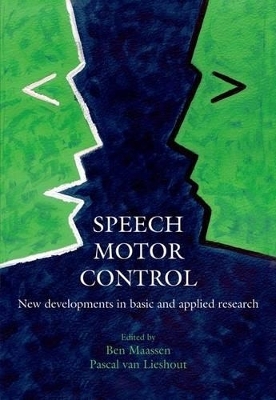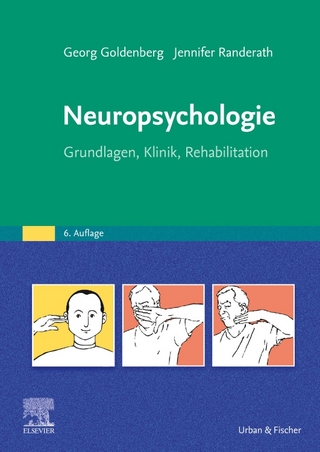
Speech Motor Control
Oxford University Press (Verlag)
978-0-19-923579-7 (ISBN)
Speaking is not only the basic mode of communication, but also the most complex motor skill humans can perform. Disorders of speech and language are the most common sequelae of brain disease or injury, a condition faced by millions of people each year. Health care practitioners need to interact with basic scientists in order to develop and evaluate new methods of clinical diagnosis and therapy to help their patients overcome or compensate their communication difficulties. In recent years, collaboration between those in the the disciplines of neurophysiology, cognitive psychology, mathematical modelling, neuroscientists, and speech science have helped accelerate progress in the field.
This book presents the latest and most important theoretical developments in the area of speech motor control, offering new insights by leaders in their field into speech disorders. The scope of this book is broad - presenting state-of-the art research in the areas of modelling, genetics, brain imaging, behavioral experimentation in addition to clinical applications.
The book will be valuable for researchers and clinicians in speech-language pathology, cognitive neuroscience, clinical psychology, and neurology.
Ben Maassen (Professor of Neurolinguistics - Dyslexia) has a background in cognitive neuropsychology and speech-language pathology. He is project coordinator in the Dutch Dyslexia Programme, leader of projects on speech motor control and developmental neuropsychological disorders, and teacher in the master-programme Speech-Language Pathology and research-master programmes Clinical Linguistics (Erasmus Mundus) and Cognitive Neuroscience. Main research areas are neurogenic speech disorders, perception-production modelling, dyslexia and neurocognitive precursors of literacy. As a Clinical Neuropsychologist he is coordinator of an expertise centre for children with speech and language disorders. Pascal van Lieshout is an Associate Professor in the Department of Speech-Language Pathology at the University of Toronto, a Canada Research (II) in Oral Motor Function, and director of the Oral Dynamics Lab. His interest is in oral motor control in speech and swallowing with a focus on applying Dynamical Systems Theory in these areas of research. He has published over 100 peer-reviewed papers in international journals, books and conference proceedings and is renowned for his studies of articulation in speech motor disorders, in particular stuttering.
SECTION ONE: MODELLING OF SPEECH PRODUCTION ; 1. Apraxia of speech: what the deconstruction of phonetic plans tells us about the construction of articulate language ; 2. Phonemic, sensory and motor representations in an action-based neurocomputational model of speech production (ACT) ; 3. Control of movement precision in speech production ; 4. Variability of North American English /r/ production in response to palatal pertubation ; SECTION 2: GENETICS AND NEUROLOGY ; 5. Brain imaging in children ; 6. Motor speech profile in relation to site of brain pathology ; 7. Cerebral control of motor aspects of speech production: neurophysiological and functional imaging data ; SECTION 3: SPEECH MOTOR DEVELOPMENT ; 8. Dynamic interaction of motor and language factors in normal and disordered development ; 9. Lip rounding anticipatory control: crosslinguistically lawful and ontogenetically attuned ; 10. Some organization principles in early speech development ; SECTION 4: FLUENCY DISORDERS ; 11. Speech motor variability in people who stutter ; 12. Speech motor timing and fluency ; SCTION 5: CLINICAL IMPACT ; 13. Classification and taxonomy in motor speech disorders: what are the issues? ; 14. Developmental models of childhood apraxia of speech ; 15. A neurodevelopmental framework for research in childhood apraxia of speech ; 16. Distinguishing among motor speech disorders is important: the role of speech pathology in neurologic diagnosis ; 17. Laryngeal articulatory coupling in three speech disorders ; 18. Electrical stimulation of deep brain structures and speech ; SECTION 6: METHODS ; 19. Recent advances in the physiological assessment of articulation: introducing three dimensional technology ; 20. Five-dimensional articulography ; 21. 2D and 3D ultrasound imaging of the tongue in normal and disordered speech
| Erscheint lt. Verlag | 25.2.2010 |
|---|---|
| Verlagsort | Oxford |
| Sprache | englisch |
| Maße | 182 x 255 mm |
| Gewicht | 910 g |
| Themenwelt | Geisteswissenschaften ► Psychologie ► Biopsychologie / Neurowissenschaften |
| Geisteswissenschaften ► Psychologie ► Klinische Psychologie | |
| Medizin / Pharmazie ► Gesundheitsfachberufe ► Logopädie | |
| Medizin / Pharmazie ► Medizinische Fachgebiete ► Neurologie | |
| ISBN-10 | 0-19-923579-1 / 0199235791 |
| ISBN-13 | 978-0-19-923579-7 / 9780199235797 |
| Zustand | Neuware |
| Haben Sie eine Frage zum Produkt? |
aus dem Bereich


